
Nevada Test Site

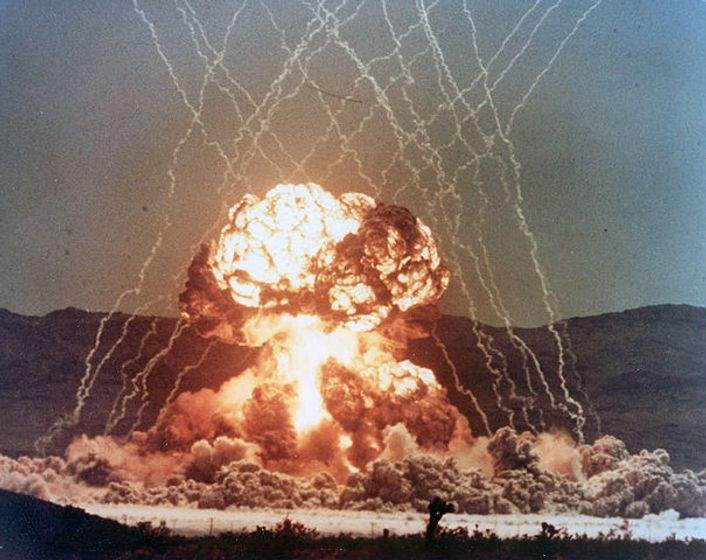
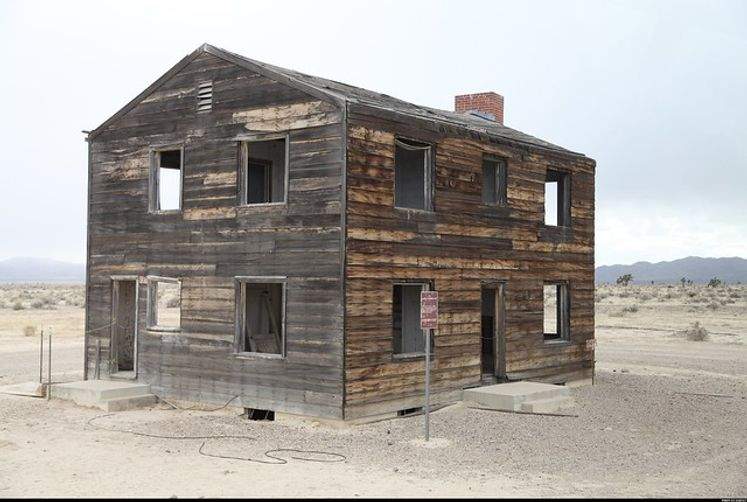
The Apple II historic site.
"NNSS tour on February 12, 2018 (Log No. 2018-049)" by Nevada National Security Site (NNSS) is licensed under CC BY-NC-ND 2.0.
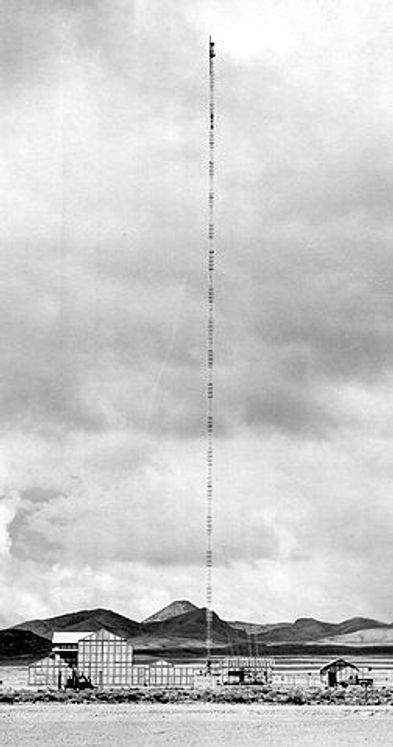
The BREN Tower was erected in 1962 and demolished in 2012.

General Electric 25-ton diesel locomotive. Was used in the 1960s for hauling nuclear powered rocket engines. Currently located at the Nevada Southern Railroad Museum.
"Nevada Southern Railroad Museum '12" by NearEMPTiness is licensed under CC BY-SA 4.0.
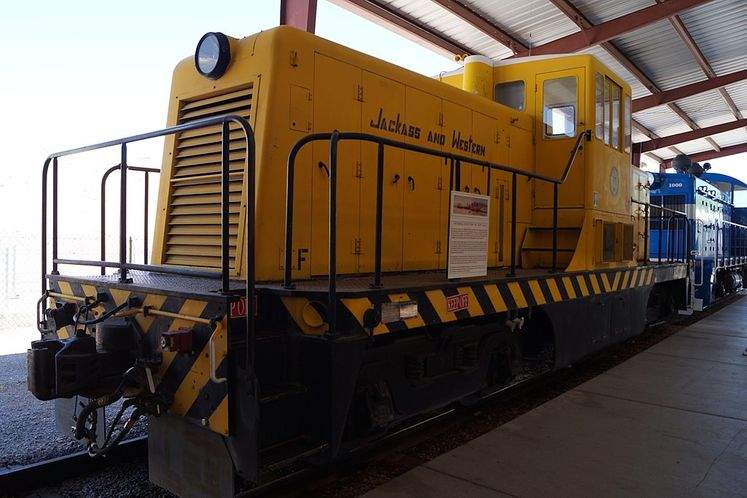
General Electric 80-ton diesel locomotive. Was used in the 1960s for hauling nuclear powered rocket engines. Currently located at the Nevada Southern Railroad Museum.
"Nevada Southern Railroad Museum '35" by NearEMPTiness is licensed under CC BY-SA 4.0.
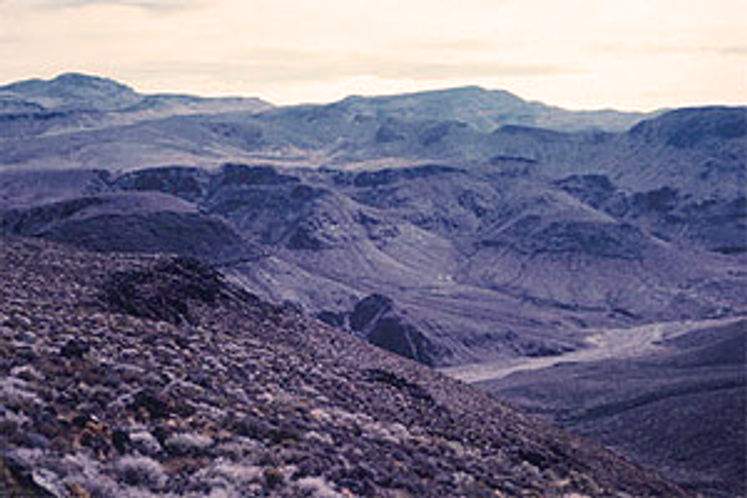
Timber Mountain Caldera is located within the Nevada Test Site. Listed as a National Natural Landmark in 1973.
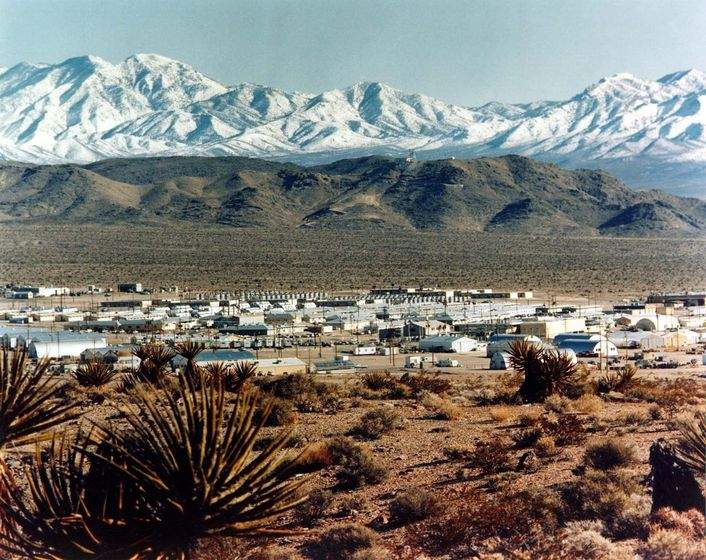
Camp Mercury. Built in 1950.
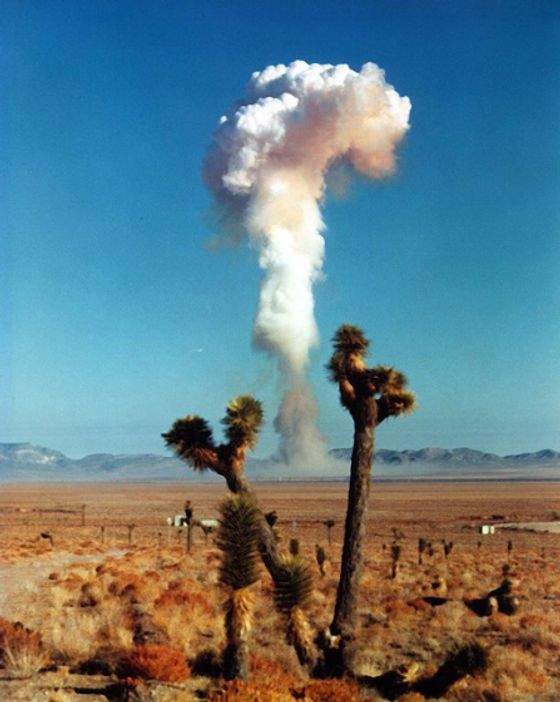
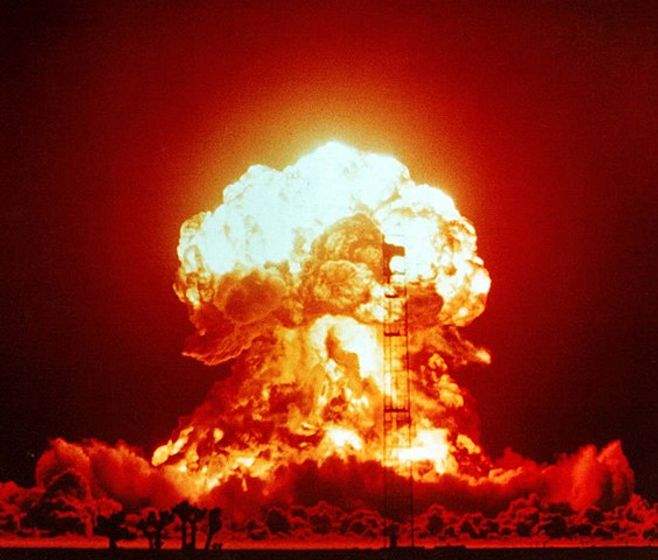
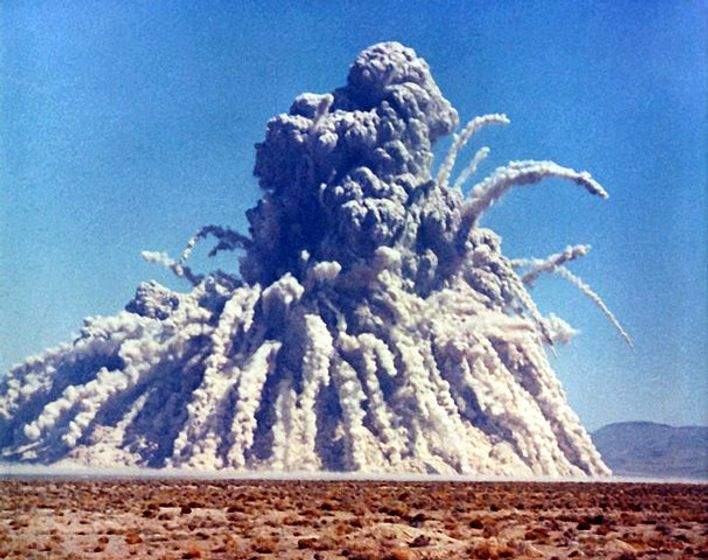
Storax Sedan nuclear test. Area 10 of Yucca Flat (Nevada Test Site).

Sedan Crater. Listed on the National Register of Historic Places in 1994.
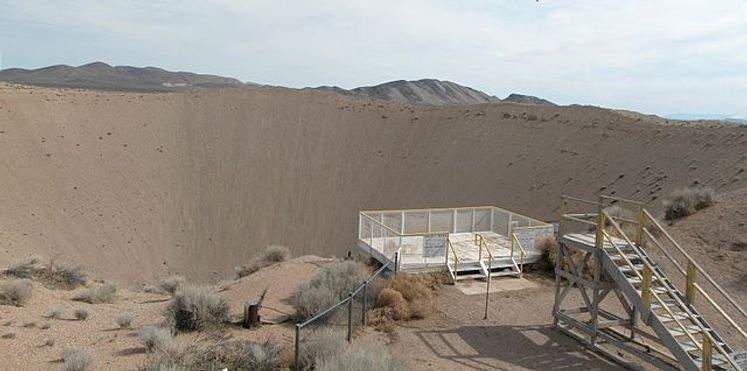
" Old and new observation decks at the Sedan Crater at Nevada Test Site" by Jarek Tuszyński is licensed under CC BY-SA 4.0.
"Tests of devices for defense and for peaceful uses of nuclear explosives have been conducted here since the 1950s. The nation’s principal nuclear explosives testing laboratory was located within this 1,350 square mile, geologically complex area in the isolated valleys of Jackass, Yucca, and Frenchman flats. Selected as the North American test site in 1950, the first test took place on Frenchman Flat in January 1951. Today, the Nevada Test Site is one of the nation’s most important expressions of the Cold War.
Archeological studies of the Nevada Test Site have revealed continuous occupation over the past 9,500 years. Several American Indian cultures are represented. Southern Paiutes were the most recent group to occupy the area."
(Nevada Historical Marker 165)
"After World War II, and during the early stages of the "Cold War" with the Soviet Union, the United States began above ground atomic testing in the South Pacific. The decision to move testing to Nevada was made primarily for national security reasons. The area had a small population and was already owned by the federal government. The first test at the Nevada Test Site was conducted on January 27, 1951. The test site was a boom for the Las Vegas economy, providing thousands of jobs and international publicity.
Many locals and tourist traveled to Mount Charleston to better view the blasts. The mushroom cloud became a symbol of the times. Atomic hairdos, atomic cocktails, and Miss Atomic Bomb contest became part of Las Vegas culture. Testing moved underground in 1963, after a treaty was signed by the U.S., Great Britain and the Soviet Union. Controversy arose over the issue of the "Downwinders," who were exposed to radiation in the fallout patterns. Health problems for those exposed to the radiation, including soldiers who participated in the tests, are a tragic by-product of the era. The last underground test was September 23, 1993. A portion of the site, Yucca Mountain, is currently being developed for storage of nuclear waste."
(Las Vegas Centennial Commission)
"The Sedan test was an excavation experiment conducted on July 6, 1962. This test involved the detonation of a 104 kiloton thermonuclear device buried 635 feet underground. The Sedan test was part of the Plowshare Program, designed to explore the technical and economic feasibility of using nuclear explosives for peaceful purposes. Potential large-scale industrial applications considered at the time included the excavation of canals, harbors, highway and railroad cuts through mountains, open pit mining, and the construction of dams. The Sedan test displaced about 12 million tons of earth, creating a crater 1,280 feet in diameter and 320 feet deep. Due to its unique role in atomic testing history, the Sedan crater was placed on the National Register of Historic Places in 1994.
In 2010, comprehensive investigation was conducted to verify residual radiation levels. Information from the 2010 and prior investigations resulted in restrictions at Sedan, which are posted to prevent in advertent exposure to radiation."
(Sedan Crater Marker)